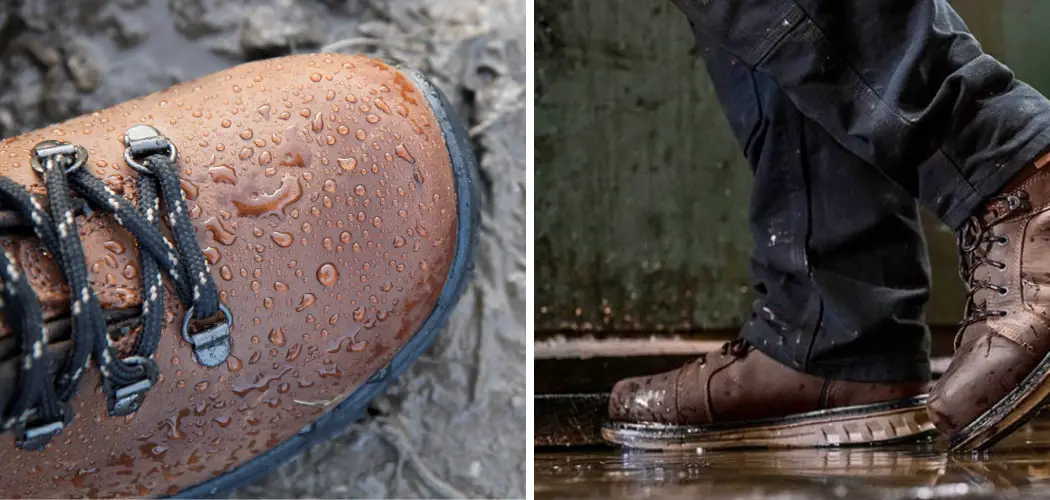Leather boots are a timeless style and an essential part of any wardrobe. They look great and last for years, but they can also be vulnerable to water damage if not properly cared for.
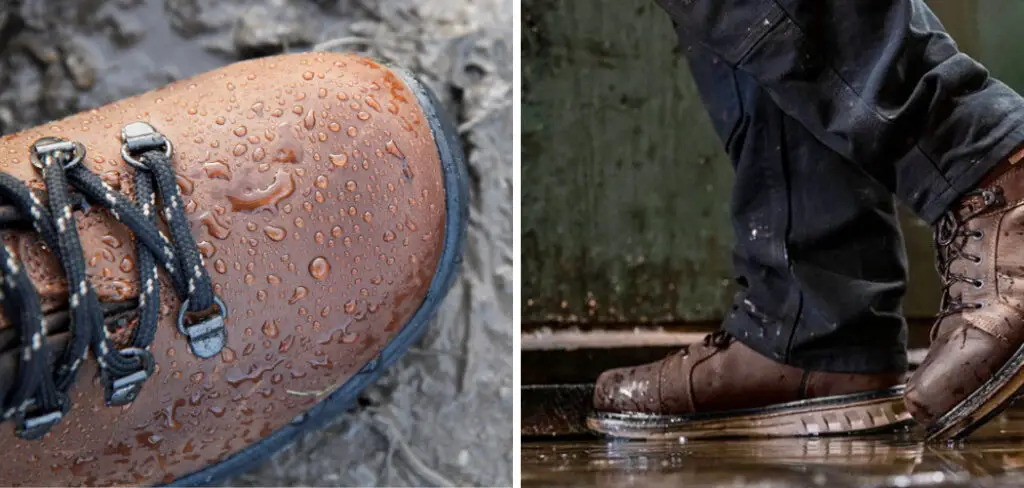
To ensure that your leather boots look their best, you must waterproof them. Waterproofing leather boots help to protect them from the elements and daily wear and tear. It also helps to keep them looking new for longer, making it a great investment for any shoe wardrobe.
The good news is that a few different methods can be used to waterproof leather boots. One popular method is to use a beeswax-based product. This type of product helps to create a barrier between the leather and the water, preventing the fabric from becoming saturated.
Another option is to use a silicon-based waterproofing spray. This type of spray helps form a waterproof barrier on the surface of the leather, repelling water and keeping the boots looking new. Whichever method you choose, be sure to follow the instructions carefully to ensure the best results. In this blog post, You will learn in detail how do I waterproof leather boots.
Step-by-Step Processes for How Do I Waterproof Leather Boots
Step 1: Inspect Your Leather Boot
Ensure there are no weak spots, rips, or tears in the leather. Use a soft, damp cloth to wipe away any dirt and dust on the boots. Ensure you dry them completely before moving on to the next step.
Step 2: Prep the Boots
Apply a leather conditioner to soften the boot surface. This will help prevent any cracking or peeling from occurring when you waterproof the boots. If your boots are already waterproofed, this step won’t be necessary.
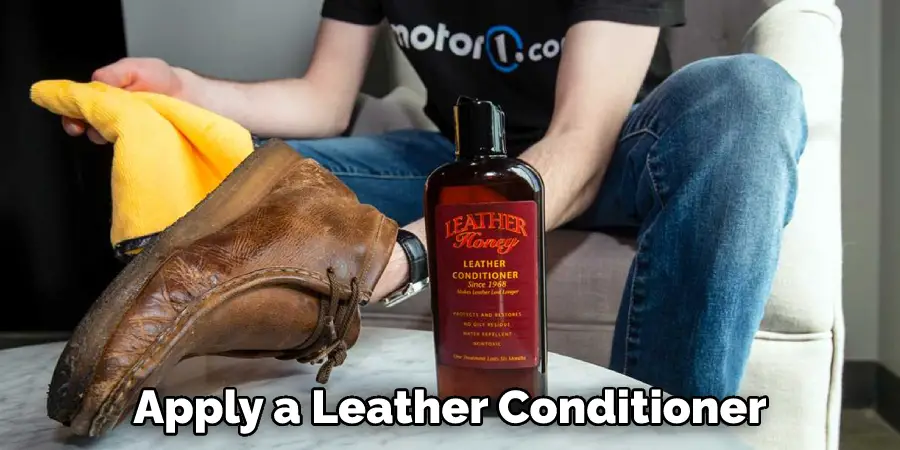
Step 4: Apply the Waterproofing Product
Apply a thin layer of the waterproofing product to your boots using a soft cloth or brush. Ensure to cover the entire boot surface, paying special attention to any seams or weak spots on the leather. Read the instructions on your waterproofing product and follow them accordingly. This will ensure proper drying times for your boots and better results overall.
Step 5: Apply a Second Layer of Waterproofing Product
Once the first layer is completely dry, apply a second coat of waterproofing. This will ensure extra protection against water damage and that your boots are totally sealed. Let it dry completely before moving on to the next step. Use a soft cloth or brush to buff the waterproofing product into the leather. This will help create a seal and ensure that there are no weak spots where water could seep in.
Step 6: Allow The Boots To Dry Fully
Allow your boots to dry completely before wearing them again. Depending on the waterproofing product, this can take anywhere from a few hours to several days. When you are not wearing your leather boots, store them in a cool, dry place. Keep them out of direct sunlight and away from any sources of heat or moisture. This will help ensure they last as long as possible.
By following these steps, you can easily waterproof your leather boots and keep them looking great for years to come. With the proper care, your boots can withstand whatever comes their way.
How Do You Choose the Right Waterproofing Product for Your Leather Boots?
To ensure the longevity of your leather boots, it is important to use a quality waterproofing product. The right waterproofing product will protect your boots from water and other elements while helping to maintain their look and feel. There are several types of waterproofing products on the market, so it is important to choose one that is specifically designed for leather.
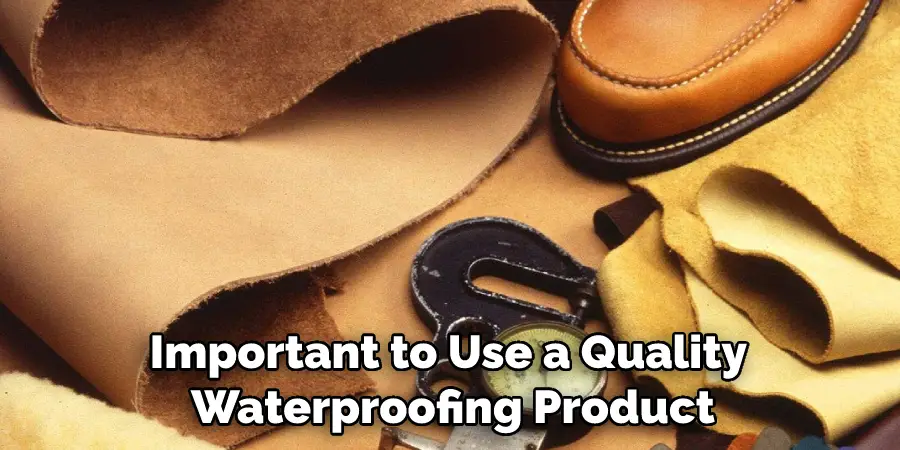
When selecting a waterproofing product for your leather boots, it is important to look at the type of leather used. Different kinds of leather require different types of waterproofing products.
For example, full-grain or nubuck leather requires a wax-based treatment, while suede requires a silicone spray. The right product should also be easy to use and will not stain or darken the leather. Additionally, you should look for waterproofing products that do not contain any harsh chemicals.
Finally, it is important to remember that waterproofing your boots only helps protect them from water and other elements; it does not make them completely waterproof. You should still take steps to protect your boots from water and dirt, such as avoiding puddles and mud and brushing off any dirt or debris. Selecting the right waterproofing product for your leather boots can extend their life and help keep them looking great for years to come.
Tips for How Do I Waterproof Leather Boots
- Before waterproofing, make sure to clean your leather boots thoroughly with a damp cloth and remove any dirt or debris.
- Conditioning the leather helps fill in cracks and imperfections that water can get through. You can buy leather conditioners specifically for waterproofing purposes, or you can use a regular leather conditioner.
- Several products are designed to waterproof and protect leather boots, such as beeswax or silicone-based sprays. Make sure to follow the manufacturer’s instructions when using these products.
- Once you’ve applied the waterproofing agent, make sure to let your boots dry completely before wearing them. This will ensure that they are fully protected from water.
- To maintain the waterproofing of your leather boots, you should reapply a waterproofing agent every few months or so to protect against dirt and other debris.
By following these steps, you can keep your leather boots looking great and protect them from the elements. With proper care and maintenance, you can ensure that your leather boots will last for years to come.
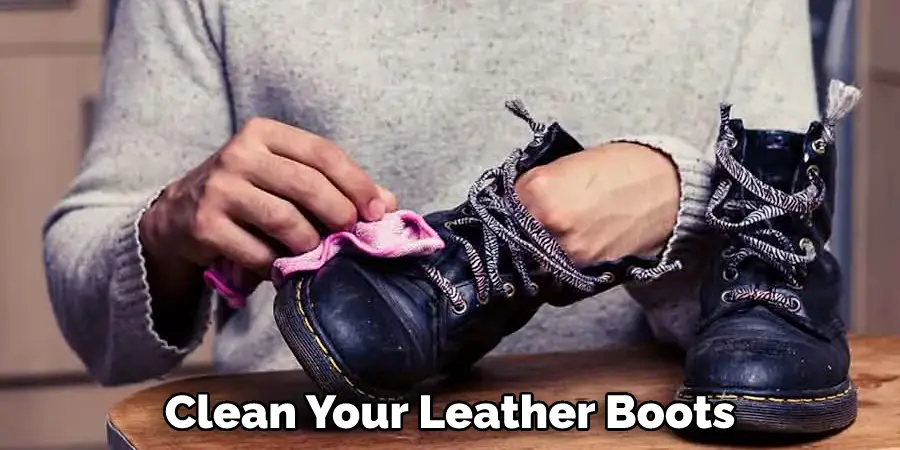
How Often Should You Reapply a Waterproofing Product to Your Leather Boots?
The answer varies depending on the level of wear and tear your boots experience. If you live in an area with a lot of rain or snow, or if you frequently hike or camp, you’ll need to reapply more often than someone who only wears their boots occasionally.
In general, it’s a good idea to reapply every one to three months or as needed if your boots show signs of water damage. Whether using a spray-on waterproofing agent or rubbing it in with a cloth, follow the manufacturer’s instructions for the best results. With proper care, your leather boots will last for many years to come.
How Can You Ensure That Your Waterproofing Product Will Last for a Long Time?
The best way to ensure that your waterproofing product will last for a long time is to use a quality sealant or coating. A high-quality sealant or coating is designed to penetrate deep into the boots’ leather, filling any cracks and sealing them off from moisture and dirt. Additionally, be sure to reapply the product according to the manufacturer’s instructions. Doing so will keep your boots waterproof for an extended period of time.
For added protection, you can also opt to apply a treatment or wax specifically designed for leather boots. This extra step will help further protect the material from dirt and water. Regular cleaning and maintenance of your leather boots are also important – this will help ensure that the waterproofing product is applied evenly and stays intact for a longer time.
Finally, ensure you store your boots in a cool, dry place when not in use. This will help keep them protected from extreme temperatures, which can damage the waterproof sealant or coating. Keeping your leather boots clean and properly maintained will make them last for years to come.
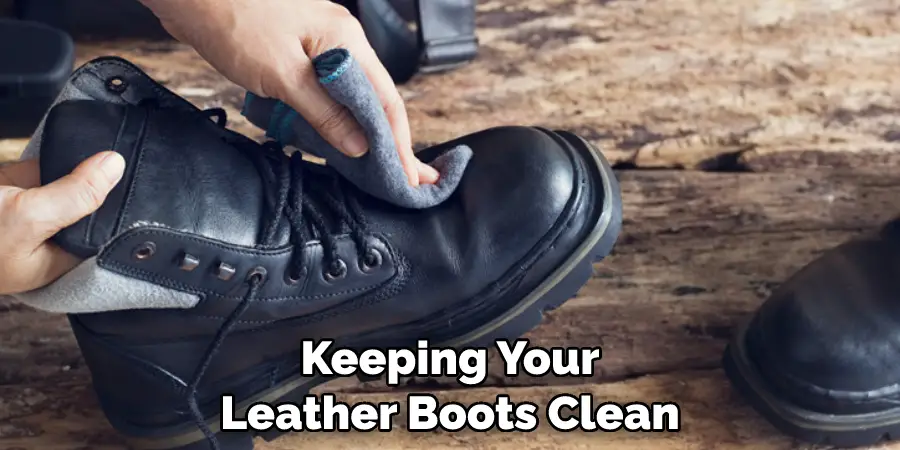
Is It Necessary to Hire Any Professional to Waterproof Leather Boots?
Yes. Although you can apply waterproofing products such as wax and/or silicone-based sprays to your leather boots, hiring a professional is often recommended. Professional boot care services use various specialized techniques to waterproof your leather boots effectively, ensuring long-term durability and protection against the elements. This includes applying premium oils, creams, and leather conditioners to maintain a flexible, breathable finish.
Many of these services also offer additional leather treatments such as dyeing and resoling. By hiring a professional boot care service, you can be sure that your boots are adequately waterproofed with the best waterproofing products available.
Frequently Asked Questions
Can I Use Vaseline to Waterproof My Boots?
A person might think that Vaseline can be used to waterproof boots, but this is not the case. Vaseline does not have a waterproofing agent, so it will not work to keep boots dry. Furthermore, Vaseline can be harmful if it gets on the skin and is then rubbed off.
Does Vaseline Waterproof Leather?
The conditioner needs to be specifically designed for this type of leather. Some popular conditioners that are commonly used to treat buffalo leather include:
1. Saddle Soap – Saddle soap is a blend of detergents, softeners, and oils that is specifically designed to clean and condition buffalo leather.
2. Neatsfoot Oil – Neatsfoot oil is a natural oil that is used to soften and protect buffalo leather.
3. Beeswax – Beeswax is a natural wax that helps to protect and enhance the appearance of buffalo leather.
4. Lanolin – Lanolin is a wax-like substance that is used to moisturize and protect buffalo leather.
Each of these conditioners has its own specific benefits and should be used in conjunction with one another to achieve the best results. It is important to test a small amount of the conditioner inside the bag before applying it to the entire surface to make sure it will not damage the leather or cause any allergies. Once the conditioner has been applied, it is important to leave it on for a few minutes so that it can work its way into the pores of the leather and begin conditioning it.
What’s the Best Water Repellent for Boots?
There are a variety of water repellents available on the market, and each has its own benefits and drawbacks. Some of the more popular water repellents include:
1. DEET: DEET is a classic water repellent that is effective against both water and oil. It is also safe to use, and can be applied safely with either hand-held or spray applications.
2. Picaridin: Picaridin is a newer water repellent that is chemically similar to DEET but has fewer environmental impacts. It is also less toxic and has a longer shelf life than DEET.
3. IR3535: IR3535 is a new water repellent that uses nanotechnology to create a durable barrier against water. It is also effective against oil and grease, and has low toxicity levels.
4. octenol: octenol is a natural water repellent that is extracted from plants such as cedarwood, laurel, and bay laurel. It has broad-spectrum protection against both water and oil, and can be effective in high-humidity environments.
It is important to select a water repellent that is effective against the specific oils and liquids that may be present on your boots surface. Additionally, it is important to test the repellent in an environment similar to the one in which you will be using it before applying it to your boots. By understanding these factors,
Is There a Spray to Make Leather Waterproof?
There isn’t a specific spray that is specifically designed to make leather waterproof, but various types of sealants and sealant treatments can be effective at protecting leather from water and other elements. Some common sealants and sealant treatments include:
1. Polyurethane coatings: These coatings are applied as a liquid or spray, and they are typically used to protect surfaces from weathering and fading. They can also be used to help waterproof leather.
2. Silicone sealants: These sealants are applied as a liquid or paste, and they are typically used to protect surfaces from water, dust, and dirt. They can also be used to help waterproof leather.
3. Urethane coatings: These coatings are applied as a liquid or spray, and they are typically used to protect surfaces from weathering and fading. They can also be used to help waterproof leather.
4. Topical oils: These oils are applied directly to the surface to be protected, and they act as a protective barrier against water, dust, and other elements.
5. Water-repelling additives: These additives are mixed into the paint or coating system before it is applied to the surface, and they help prevent water from penetrating the coating.
Conclusion
Waterproofing your leather boots is important to keep them looking their best and protect them against water damage. The most reliable method for waterproofing your boots is to use a specialized product, as this will provide the best protection while also helping to preserve the natural look and feel of your leather.
For further protection, consider treating your boots with a protective spray or wax and check the seams for any signs of damage before wearing them. I hope this article has been beneficial for learning how do I waterproof leather boots. Make sure the precautionary measures are followed chronologically.

